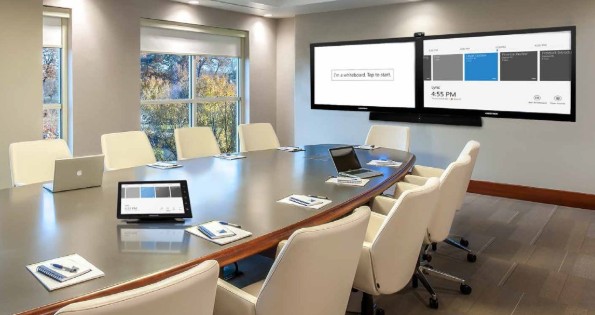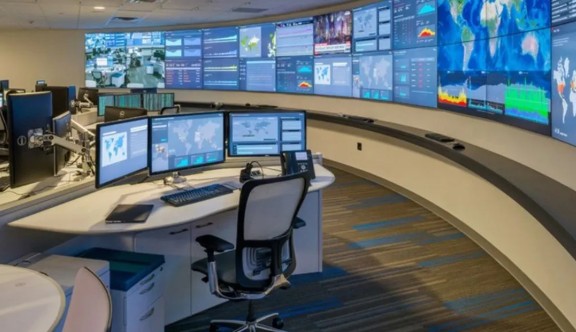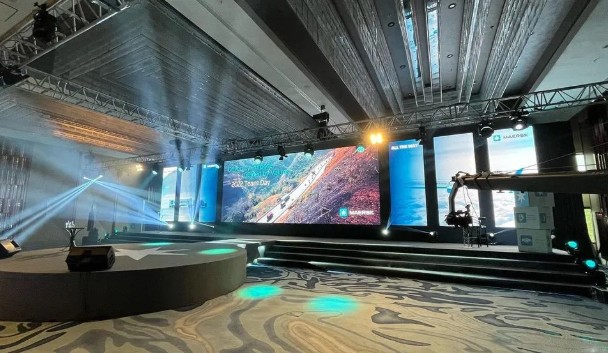In an era where communication and engagement define success, organizations are increasingly turning to audio visual solutions to bridge gaps, enhance collaboration, and create memorable experiences. Unlike standalone equipment, AV solutions integrate hardware, software, and connectivity into complete systems tailored to specific needs. From hybrid meetings to immersive retail displays, these solutions are no longer optional extras—they are critical assets that shape how businesses and institutions interact with their audiences.

What Are Audio Visual Solutions?
At their core, audio visual solutions are integrated systems that combine audio equipment, visual displays, control technologies, and often cloud-based platforms to serve a defined purpose. Instead of treating a microphone, a projector, or a video conferencing tool as isolated devices, solutions focus on how these elements interact as a unified ecosystem.
A corporate AV solution, for example, may include LED walls for presentations, high-quality microphones and speakers for clarity, cloud collaboration platforms for remote participants, and a centralized control panel for seamless operation. In retail, AV solutions may take the form of interactive digital signage networks that synchronize video content with soundscapes to attract and engage customers.
The distinction is clear: equipment is about “what,” solutions are about “how.”

Core Components of AV Solutions
While every solution is unique, most share four essential building blocks:
- Visual Displays– Ranging from LED walls and LCD screens to projection mapping systems and transparent displays, visuals set the stage for engagement. The choice depends on factors such as space size, ambient lighting, and the level of immersion required.
- Audio Systems– Professional-grade microphones, speakers, and DSPs (digital signal processors) ensure that messages are heard as clearly as they are seen. Good audio often makes or breaks the effectiveness of an AV solution.
- Control and Integration Platforms– Modern solutions rely on centralized control systems, signal processors, and automation software to synchronize devices. A single touch panel can manage lighting, sound, and visuals simultaneously.
- Connectivity and Collaboration Tools– Cloud platforms, conferencing software, and wireless sharing tools extend solutions beyond physical rooms, enabling hybrid or global participation.
Types and Real-World Applications
Audio visual solutions vary widely by industry and use case. Here are some of the most common applications, paired with real-world examples:
- Corporate Environments: Boardrooms now integrate LED walls, video conferencing platforms, and ceiling microphones to create hybrid meeting spaces. Multinational companies often deploy global AV standards to ensure consistent collaboration across offices.
- Education: Universities are adopting lecture capture systems and interactive whiteboards. A modern classroom may record lectures automatically, stream them live, and allow remote students to participate in real time.
- Retail and Hospitality: Digital signage and immersive displays transform customer journeys. A hotel lobby might feature a large-format LED video wall with dynamic visuals, while restaurants deploy interactive menus synced with promotional content.
- Events and Entertainment: Projection mapping, XR stages, and high-fidelity sound systems deliver unforgettable live experiences. For instance, music festivals now synchronize LED stages with real-time video feeds and lighting effects.
- Government and Healthcare: Command centers require large-format displays, instant data visualization, and reliable communications. Hospitals are leveraging AV solutions for telemedicine, allowing specialists to consult patients remotely with full audio-visual clarity.

Key Benefits for Businesses and Institutions
Organizations invest in AV solutions because they deliver measurable value:
- Enhanced Communication– Hybrid meetings eliminate geographic barriers, allowing teams across continents to collaborate effectively.
- Customer Engagement– Research shows that digital signage can increase sales by up to 20%, highlighting how immersive visuals directly impact consumer behavior.
- Operational Efficiency– Centralized control reduces complexity, while automation cuts down setup time. An event that once took hours to configure can now be activated with a single command.
- Brand Impact– High-resolution video walls and synchronized audio environments strengthen brand presence and leave lasting impressions on audiences.
- Scalability and Longevity– Well-designed solutions adapt to changing needs. An organization can start with a single conference room and later scale to an enterprise-wide AV network.
Step-by-Step Guide to Choosing the Right AV Solution
Selecting the right solution requires a structured approach. A practical five-step framework includes:
- Define Your Objectives– Identify the core purpose: improved collaboration, customer engagement, or operational control.
- Assess Your Environment– Room dimensions, lighting, and acoustics influence system design. For instance, projectors may underperform in brightly lit retail spaces where LED displays are more suitable.
- Evaluate Integration Needs– Ensure that audio, video, and control systems can work together without technical hurdles. Compatibility with existing IT infrastructure is critical.
- Plan for Scalability– Select solutions that allow easy upgrades, such as adding endpoints to a conferencing platform or expanding digital signage networks.
- Consider Training and Support– Even the most advanced system will fail without proper user adoption. Reliable vendors should provide onboarding and ongoing maintenance.
Challenges and Considerations in Implementation
While the benefits are clear, deploying AV solutions comes with challenges:
- Budget Constraints– High-quality solutions require upfront investment, but cutting corners often leads to higher long-term costs.
- User Adoption– Complex systems may intimidate end-users. Training and intuitive design are critical.
- Compatibility Issues– Legacy systems may not integrate smoothly with modern platforms, requiring custom solutions.
- Maintenance and Upgrades– AV technology evolves rapidly, so long-term planning must include upgrade paths and support contracts.
Addressing these challenges early ensures smoother implementation and better ROI.
Future Trends and Innovations
The AV industry is evolving at an unprecedented pace. Key trends shaping the future include:
- Immersive Experiences– Extended reality (XR) and holographic displays will redefine storytelling in education, events, and retail.
- AI-Driven Automation– AI will increasingly manage routine tasks, from automatic camera tracking to intelligent sound optimization.
- Cloud-First Collaboration– The shift to hybrid and remote work is driving adoption of cloud-based conferencing and real-time content sharing.
- Sustainability and Energy Efficiency– With growing environmental awareness, manufacturers are focusing on energy-efficient LED displays and eco-friendly system designs.
Conclusion
Audio visual solutions have moved far beyond the days of projectors and microphones. They now represent strategic investments that shape communication, engagement, and brand perception across industries. By carefully defining goals, integrating the right technologies, and planning for scalability, organizations can unlock powerful benefits and stay ahead of the curve. As innovation continues, AV solutions will remain central to how we teach, collaborate, sell, and entertain in an increasingly connected world.


